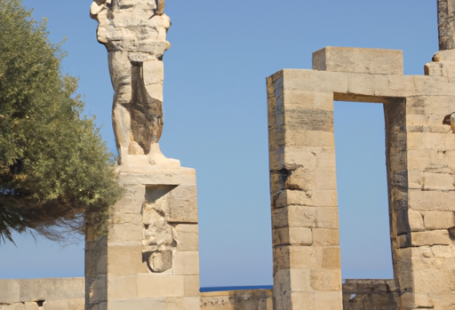Overview of the Original 7 Wonders
The original Seven Wonders of the World are a collection of remarkable constructions that were built in antiquity. The list was created by Greek historians and includes the Great Pyramid of Giza, the Hanging Gardens of Babylon, the Temple of Artemis at Ephesus, the Statue of Zeus at Olympia, the Mausoleum at Halicarnassus, the Colossus of Rhodes, and the Lighthouse of Alexandria. These seven ancient monuments were built by different civilizations in different parts of the world, and all of them have been lost to time due to natural disasters, wars, and the passage of time.
Each of the seven Wonders was a source of great pride for the cultures that built them, and they were all held in high regard for centuries. Many of the Seven Wonders were destroyed by natural disasters, wars, and the passage of time.
The Location of the Original 7 Wonders
The original Seven Wonders of the World were located in different parts of the ancient world. The Great Pyramid of Giza was located in Egypt, the Hanging Gardens of Babylon were located in present-day Iraq, the Temple of Artemis at Ephesus was located in present-day Turkey, the Statue of Zeus at Olympia was in present-day Greece, the Mausoleum at Halicarnassus was in present-day Turkey, the Colossus of Rhodes was in present-day Greece, and the Lighthouse of Alexandria was in present-day Egypt.
Each of these Wonders was built by different civilizations and cultures, and they all held a place of great reverence in their respective societies. They were all considered to be great achievements of engineering and artistry.
Modern Additions to the 7 Wonders List
The original list of the Seven Wonders of the World was first compiled in the 2nd century BC, and since then, several more Wonders have been added to the list. The most notable additions to the list are the Great Wall of China, the Taj Mahal, Machu Picchu, Chichen Itza, and the Statue of Christ the Redeemer.
These modern additions to the Seven Wonders list are a testament to the ingenuity and creativity of different cultures and civilizations throughout the world. Despite being thousands of miles apart from each other, these Wonders all share the same level of admiration and awe that the original Seven Wonders inspired.
The answer to the question “Which Was Not One of the Original 7 Wonders of the World?” is none of the modern additions to the list. The original Seven Wonders of the World were all built in antiquity, and none of the modern Wonders made it on to the original list.





